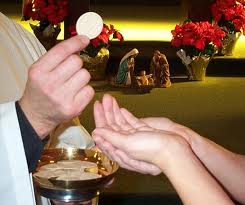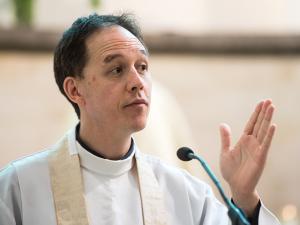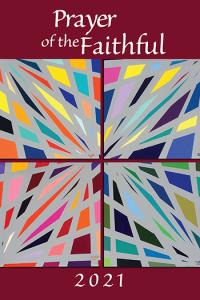
If you’re a traditionalist Catholic looking at the modern Mass, you might think the liturgical reforms changed the Mass beyond recognition. But let’s try to imagine a more neutral observer. My imaginary observer is going to be an alien from another planet. This being will have superb powers of observation, including the ability to read minds. He/she/it/they came to earth in the early ‘60’s and happened to take in a Catholic Mass. A certain Jack Hartjes was there. Returning 50 some years later “she” (to simplify things) found the same Jack Hartjes worshiping at another, but somewhat different, Mass.
This is the first in a series that will take a look at the way the Mass is celebrated in Catholic churches today.
After about half a century, most Catholics have gotten used to the new way of celebrating the Mass. Its new features don’t startle us anymore. In fact, we either don’t know or don’t think about the way the Mass used to be. But, as an older Catholic, I find that having a past to compare our liturgies to helps me see better what we’re doing today. This series on the Mass will take advantage of that double perspective.
A look inside one believer
My imaginary alien with the special powers of observation peers inside the Catholic that I was just as he’s getting up from the Communion rail. What does she see? The host is still on his tongue. The worshiper is having a little trouble swallowing that host, without chewing it, of course. That wouldn’t be reverent. He’s remembering what he was taught—that the real presence of Jesus remains just as long as the host maintains the appearance, the outward properties, of bread. He’s wondering, “What if the host dissolves in my mouth? Is Jesus still there, and will I still have received Communion if he isn’t?”
Getting back to his pew, having successfully swallowed the host, he kneels in silent contemplation. He’s trying to keep his mind on Jesus, who will be really with him for whatever seconds or minutes it takes to digest that host. (It’s a small, thin wafer, designed, not intentionally but effectively to make the real presence of Jesus last only a veryshort time. Also it wa slightly s economical.)
Same believer, older now
Liturgical reform has changed the experience of receiving Communion. My imaginary observer, on her second tour of earth notices the difference. This time the worshiper receives a larger host and chews it before swallowing. He still believes in the Real Presence of Jesus as bread, especially as reserved in the tabernacle. But he doesn’t think chewing is irreverent. He doesn’t concern himself with a scientific question like how long ingested bread stays bread. He has a more expansive Real Presence in mind, the presence of Jesus in the assembly’s sharing of a meal. Instead of privately meditating, he joins the other worshipers in song.
Memory can be an exercise in nostalgia, but there is good reason to think back on the details of our pre-Vatican II experiences. Those details and the way they have changed with liturgical renewal show in what ways our understanding of the celebration has changed. Remembering the changes can help us notice things about today’s liturgy that might otherwise be taken for granted. Finding the reasons why these things changed can help us understand Eucharist better.
The new Mass and the old, briefly
Coming posts in this series will examine each of the major parts of the Mass. It will be as if seeing through the eyes of that imaginary observer. She is not accustomed to seeing things like this, but she remembers what she saw 50 years ago. It looks like a change from
- individual piety to communal celebration,
- attendance to participation,
- small symbolic objects to large symbolic actions,
- respite from last week, preparation for the next week of life in the world and the actual work of enacting harmony and unity in the world now to — well — in all those respects and many more the Mass is essentially unchanged.
Is this a new Mass, or is it simply the Mass, showing more clearly to Catholics and to the world, which just might be watching, how God’s Kingdom becomes real in the world?
Image credit: “Liturgical Reflections” blog












